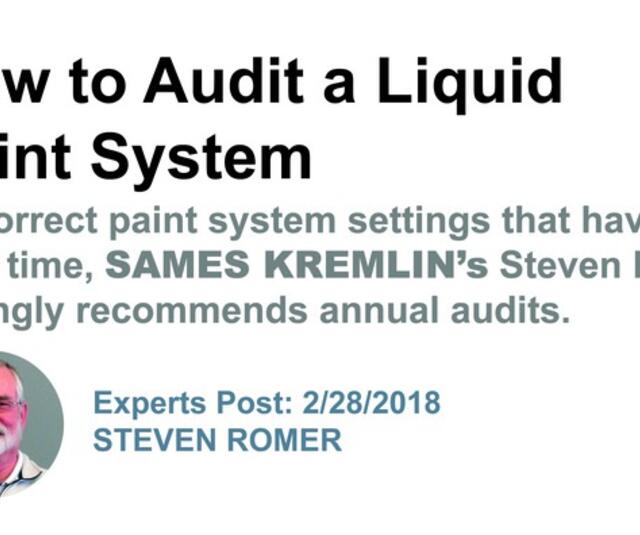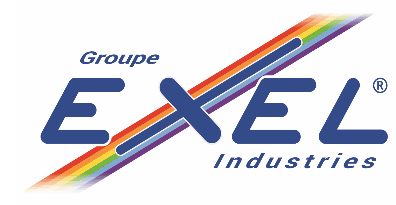How to Audit a Liquid Paint System
Steven Romer is a Senior Applications Engineer for SAMES KREMLIN and recently worked with the editor of Products Finishing magazine to generate the article below.
Q. The settings in our paint system have drifted over time. How often should we audit, and what should we look at?
A. Most customers want to get high-quality finished parts out the door to their customers. A 10 to 15 percent increase in coating usage is often overlooked, as it might be considered such a small amount.
Take film-build requirements, for example: If the quality level requirement is 1.0 mil (25.4 microns), it is very hard to see the film grow to 1.1 mils, an increase of only 0.1 mil (2.54 microns). The finish still looks good, the waste is under control, and the products are going out the door.
However, if your annual coating cost is $50,000, this means you are throwing $5,000 out the door every year. I have seen large user with a paint budget of a million dollars, and even at only 0.1 mil over build, the wasted paint is really a major item—more than $100,000.
If the atomization air pressures are 10 percent high, you won’t see that; if the electrostatic voltage is down 10 percent, you most likely will not see that, either. How about the air flow in the booth? If it is just 10-percent high or higher just in the application zone, you won’t see that, but the paint wasted into the spray booth will be 10 percent more than normal, and you won’t see that either. Maybe the timing of automatic equipment is just 10 percent higher than it should be. Maybe there is a pulsation in the coating delivery system, which generates a 10 percent over-build. You won’t see any of that, either. There are so many little areas that are overlooked every day in manufacturing.
A manufacturer’s job is to get stuff out the door on a timely basis, and just a little 10-percent error can be very costly. Just about every plant I visit is experiencing the little line drifting that isn’t necessarily noticeable, but that dramatically effects bottom-line profits. Only an organized audit can find these small, costly problems.
I strongly recommend annual audits, and, I don’t mean a quick-in-and-out review of the system. An audit needs to find the problems, the reasons for the problems and the solutions for the problems. And this takes time to do correctly. Normally, it will take about three days to find issues, develop corrective-action plans and help implement the new actions. And these audits should be done by an individual whose only goal is to find the small problems throughout the entire line. Filter providers, application equipment suppliers, coating suppliers and others have other goals and demands on their time.
Simple corrective actions might include adjusting the distance between the paint spray tip and the substrate to eliminate the need to add reducing solvent to keep the paint wet until it coats the parts. Using reducing solvents can contribute to overall waste, because such solvents are just a vehicle for getting the coating to the part and are driven off during curing. Oven temperature might also need to be increased to burn off those solvents, adding another layer to the unseen waste.
Audits don’t cost money, but they can generate dollars and improve product quality.
To see the article on Products Finishing website, click on the link below:
https://www.pfonline.com/articles/how-to-audit-a-liquid-paint-system







